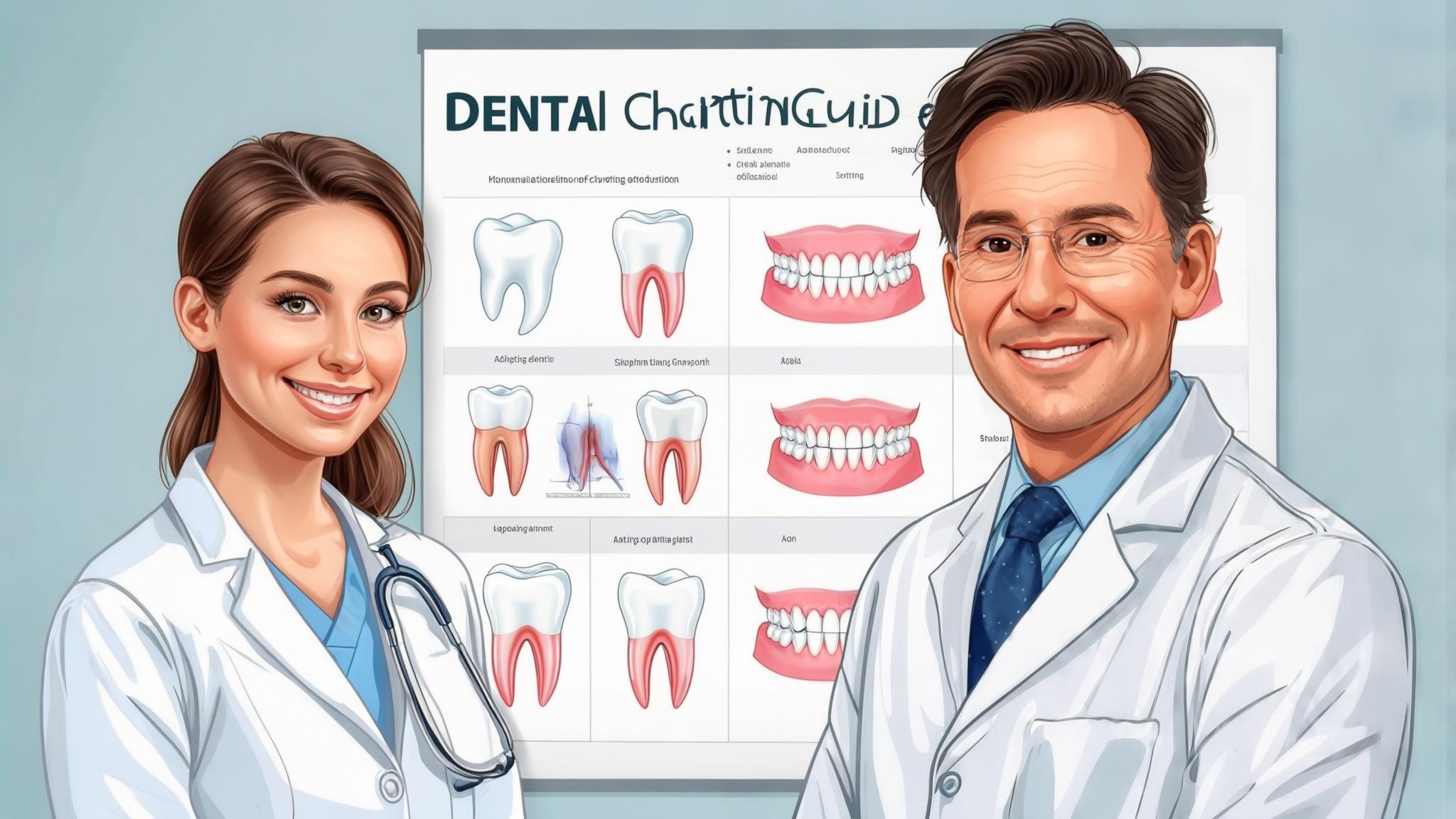Understanding Dental Charting: A Key Component of Oral Health
Dental charting is a fundamental aspect of maintaining oral health, but it's often shrouded in mystery for many patients. This article will unravel what dental charting is, why it's important, and what you can expect during the process. We will explore the components of a dental chart, the steps involved in charting, and its significance in dental care.
What is Dental Charting?
Explanation of Dental Charts
A dental chart is a comprehensive record of your dental health. Its primary purpose is to document the condition of your teeth and gums, track changes over time, and guide treatment decisions. Dental charts usually include details such as the state of each tooth, any existing dental work, and conditions like cavities or gum disease.
Components of a Dental Chart typically include:
- Patient Information: Basic personal and medical details.
- Clinical Findings: Observations from dental examinations.
- Treatment Plans: Proposed procedures and follow-up care.
- Radiographs: X-rays and other images that provide a deeper look into your oral health.
Historical Context of Dental Charting
Dental charting has evolved significantly over the years. In the past, dental records were simple, hand-written notes. Today, they are detailed, digital records that play a critical role in modern dental practice. This evolution highlights the growing importance of accurate and comprehensive dental records in providing quality care.
Components of a Dental Chart
Patient Information
Every dental chart begins with personal details like your name, age, and contact information. This section also includes your medical and dental history, which helps dentists understand any past treatments or allergies that might affect your care.
Clinical Examination Findings
During a dental check-up, the dentist will conduct a thorough examination and record their findings. Tooth charting involves using a numbering system to identify each tooth and note any conditions such as cavities or signs of gum disease.
Treatment Plans
Based on the clinical findings, the dentist will outline a treatment plan. This plan includes recommended procedures, their timelines, and any necessary follow-up appointments to ensure the best outcomes for your oral health.
Radiographs and Images
X-rays are a crucial part of dental charting as they reveal issues not visible during a regular examination. These visual aids are integrated into the chart to provide a comprehensive view of your dental health.
The Process of Dental Charting
Steps During a Dental Check-Up
- Initial Patient Interview: Gathering personal and medical history.
- Clinical Examination: Inspecting teeth and gums for any issues.
- Charting Findings: Recording observations and proposed treatments.
Tools and Technologies Used
Dental charting can be done using paper or digital charts. Modern practices often use specialized software that allows for easy updates and sharing among dental professionals, enhancing the accuracy and efficiency of record-keeping.
The Importance of Dental Charting
Dental charting is vital for several reasons:
- Tracking History: It helps monitor changes and progress over time.
- Communication: Enhances collaboration among dental professionals.
- Legal Documentation: Provides a record that can protect both patients and dentists.
- Personalized Care: Facilitates tailored treatment plans based on individual needs.
Common Terms and Notations in Dental Charting
Understanding dental charting involves knowing some common terms and symbols. For example, dentists use different tooth numbering systems like the FDI or Universal systems to identify each tooth accurately. This standardization ensures clarity and consistency in dental records.
Challenges in Dental Charting
Despite its importance, dental charting faces challenges such as:
- Accuracy and Consistency: Ensuring all records are detailed and uniform.
- Integration of Technologies: Adapting to new digital tools while maintaining accuracy.
- Privacy Concerns: Protecting patient data in an increasingly digital world.
Conclusion
Dental charting is a cornerstone of effective dental care. Understanding your dental chart can empower you to take an active role in your oral health. As technology advances, dental charting will continue to evolve, offering even greater benefits in dental care.
References
For further reading on dental health and charting practices, consider exploring the following resources:
Appendices
Sample Dental Chart
(Include an example of a typical dental chart here)
Glossary of Dental Terms
- Caries: Tooth decay or cavities.
- Periodontitis: Serious gum infection that damages gums and can destroy the jawbone.

